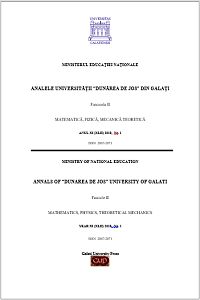Natural phenomena impacts and effects on tropospheric ozone associated with air pollution
Abstract
This paper presents the impact of lightning on NOx emissions and the further impact on the tropospheric ozone, a strong oxidant, which can harm peoples health. People at greater risk from ozone exposure are, among others, children, older adults and people with certain diseases like asthma or bronchitis. Lightning provides an average 3 ppbv per year of policy relevant background (PRB) ozone concentration and up to 15 ppbv during a single event, meaning that beside igniting forest fires and causing weather-related fatalities among other negative impacts, is also a natural provider of air pollution. With the increase in level of tropospheric ozone driven by the lightning phenomena, the number of people affected by this pollutant located in areas nearby lightning occurrence can increase as well. This means that it is of major importance to find areas where lightning phenomena mostly occur. The investigation has been done using a series of independently provided parameters of lightning flash densities and emissions distributions using data from the Vaisala Network and the Ozone Monitoring Instrument aboard NASA's OTD and LIS satellites.


